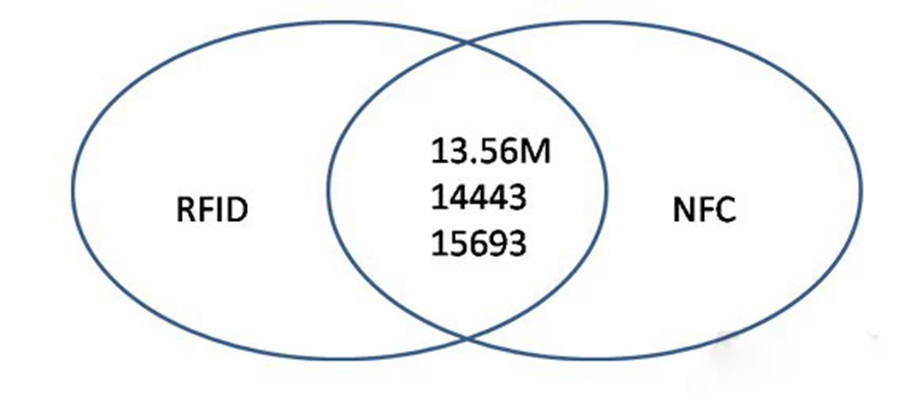Differences Between NFC and RFID
Near Field Communication (NFC) is a Chinese acronym for near Field communication technology. NFC is developed on the basis of non-contact radio frequency identification (RFID) technology, combined with wireless interconnection technology. Technology compared to RFID started a lot later, probably around 2003, by Philips, Nokia and Sony mainly promoted a short-range wireless communication technology, is a short-range contactless communication method, the operating frequency of 13.56MHz, the communication rate of 106kbit/ s to 848kbit/ s. Through the mobile phone as the carrier, the contactless IC card application is combined with the mobile phone, with the card, reader, point-to-point three application modes, to achieve mobile payment, industry applications, points exchange, electronic ticketing, identity identification, anti-counterfeiting, advertising and other applications of service products.
Radio Frequency Identification (RFID) Radio frequency identification (RFID) is a wireless communication technology that uses radio waves to transmit data to achieve long-distance identification and tracking management of items, animals or people. RFID technology is composed of tags, readers and middleware, among which tags are the core components of RFID. Tags have a chip and an antenna built in, can store and transmit data, and have unique identifiers that do not duplicate. A reader sends radio waves to a tag, reads the data, and sends it to a computer system for processing. RFID technology is widely used, including logistics management, warehouse management, production line automation, vehicle management, library management, animal tracking, personnel access management and other fields. Because of its high efficiency, precision, automation and other advantages, it is more and more concerned and applied by enterprises and institutions.
NFC and RFID look very similar at the physical level, but in fact they are two completely different fields, because RFID is essentially an identification technology, and NFC is a communication technology.

Differences between NFC and RFID
Operating frequency: The NFC frequency is fixed at 13.56MHz, while RFID includes active (2.4G, 5.8G), semi-active (125K, 13.56M, 915M, 2.4G, 5.8G), and passive RFID, of which the common passive RFID can be divided into low (125KHz/134.2KHz) according to the frequency. High frequency (13.56MHz) and ultra-high frequency (860-960) bands.
Working mode: NFC integrates point-to-point communication functions, reader functions and contactless card functions into a chip, while RFID consists of two parts: reader and tag. NFC technology can both read and write, and RFID can only achieve the reading and judgment of information.
Transmission distance: NFC transmission distance is much smaller than RFID, NFC transmission distance is only 10 centimeters, RFID transmission distance can reach several meters, or even tens of meters. NFC is a close-range private communication method. Compared with RFID, NFC has the characteristics of short distance, high bandwidth, low energy consumption and high security.
Application field: NFC is more used in the field of consumer electronics, and plays a huge role in the fields of access control, bus, mobile payment, etc. RFID is better at long-distance identification, and is more used in production, logistics, tracking, and asset management.









